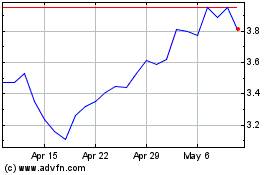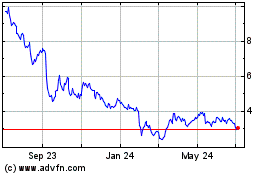IHS: Vast Majority of Crude Oil Transported via Keystone XL Pipeline Would Be Consumed in the United States
February 23 2015 - 12:46PM
Business Wire
New report also says that U.S. imports of Canadian oil sands
will continue to grow regardless of whether or not the pipeline is
approved
Most, if not all, crude oil that would be transported via the
proposed Keystone XL pipeline to the U.S. Gulf Coast would not be
exported, and the vast majority of refined product (about 70
percent) derived from it would be consumed in the United States,
according to a new report by IHS (NYSE: IHS), the leading source of
critical information and insight.
The report, which analyzes the outlook for oil sands and other
heavy crudes in North America, also says that the amount of oil
sands flowing into the United States would still grow regardless of
whether Keystone XL is built.
“There is a common misunderstanding that somehow most or all of
the oil shipped to the U.S. Gulf Coast via the Keystone XL pipeline
would be exported to other countries,” said Aaron Brady, senior
director for IHS Energy. “The reality is that the U.S. Gulf Coast
is the world’s largest single refining market for heavy crudes such
as oil sands, making it unlikely these barrels would be exported
offshore. And, the overwhelming majority of refined products
produced in the Gulf are consumed in the United States, regardless
of the crude source.”
The U.S. Gulf Coast is the largest refining market for crude—and
particularly heavy crude of the type produced by Canada, Mexico and
Venezuela—in the world. Some 2.7 million barrels per day of
refining capacity on the Gulf Coast has been optimized for heavy
sour crudes over several decades. As a result, the report predicts
“a contest looms on the U.S. Gulf Coast between Canadian and Latin
American crudes.” The report notes that “Venezuelan exports have
also tilted away from the U.S. market and towards Asia as a result
of a set of Chinese government loans that carry along a commitment
of oil supply.”
Previous IHS research has concluded that the greenhouse gas
emission impact from importing and processing more oil sands crude
in the United States would be negligible since they would take the
place of other heavy crudes that are currently being imported that
have a similar carbon intensity—such as those from Venezuela.
“Regardless of whether the oil is imported from Canada or
Venezuela, the overwhelming majority of the refined products
produced in the Gulf will continue to be consumed in the United
States,” Brady added.
The new IHS report finds that, absent new pipeline capacity, the
use of alternate transportation routes—including rail— would still
result in the growth of oil sands imports into the United
States.
The report also finds that overall growth in oil sands
production is expected to continue despite the collapse in oil
prices over the past several months. Oil sands projects, the report
notes, have a very long time horizon—with production lasting as
long as 30 to 40 years—making them relatively resilient to periods
of low oil prices.
“Currently there is over 1 million barrels per day of capacity
at various stages of construction in the oil sands,” said Kevin
Birn, director of the IHS Oil Sands Dialogue. “IHS anticipates
existing projects will continue to operate and those under
construction will proceed to completion. While investment will
not be immune to the drop in oil prices, significant production
growth is still expected over the coming years. IHS expects oil
sands production to rise to 2.9 million barrels per day by 2020, an
increase of 800,000 barrels per day (without diluent).”
About IHS
(www.ihs.com)
IHS (NYSE: IHS) is the leading source of insight, analytics and
expertise in critical areas that shape today’s business landscape.
Businesses and governments in more than 150 countries around the
globe rely on the comprehensive content, expert independent
analysis and flexible delivery methods of IHS to make high-impact
decisions and develop strategies with speed and confidence. IHS has
been in business since 1959 and became a publicly traded company on
the New York Stock Exchange in 2005. Headquartered in Englewood,
Colorado, USA, IHS is committed to sustainable, profitable growth
and employs about 8,800 people in 32 countries around the
world.
IHS is a registered trademark of IHS Inc. All other company and
product names may be trademarks of their respective owners. © 2015
IHS Inc. All rights reserved.
IHS Inc.Jeff Marn, +1
202-463-8213Jeff.marn@ihs.comorPress Team, +1
303-305-8021press@ihs.com
IHS (NYSE:IHS)
Historical Stock Chart
From Mar 2024 to Apr 2024

IHS (NYSE:IHS)
Historical Stock Chart
From Apr 2023 to Apr 2024
